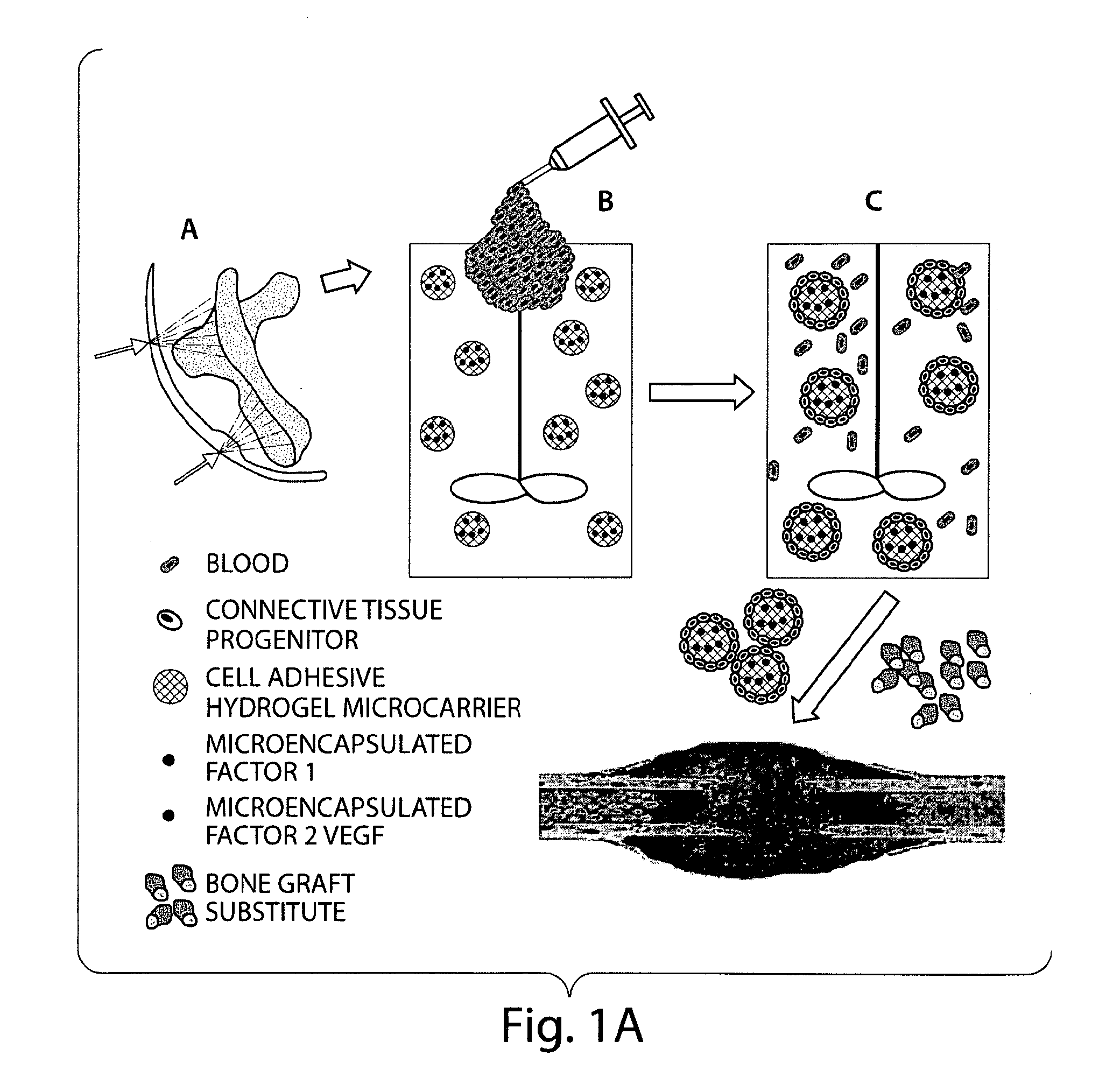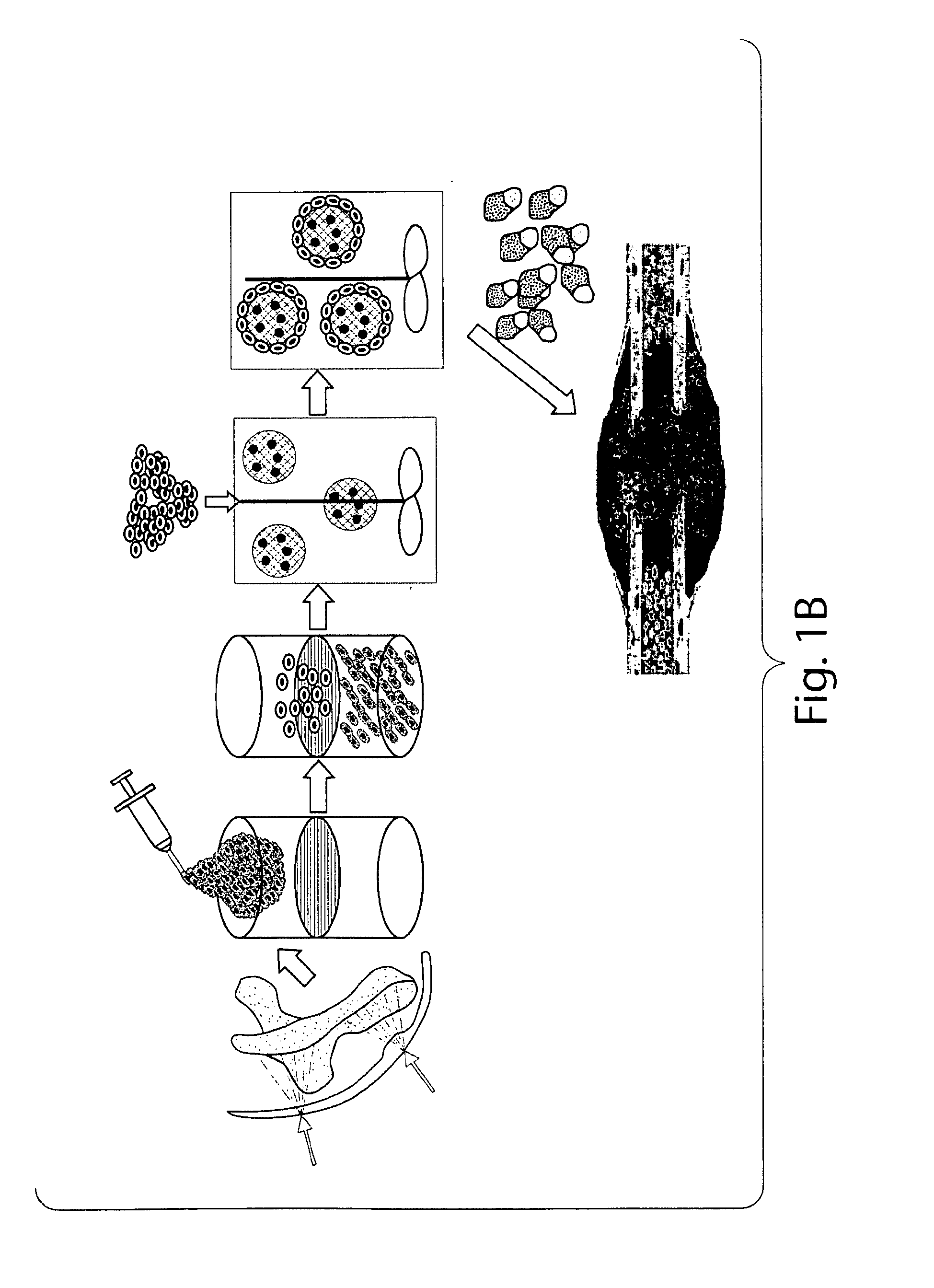Methods and compositions relating to progenitor cells
a technology of progenitor cells and compositions, applied in the field of methods, can solve the problems of lack of control over transplanted cells, and achieve the effect of efficient isolation and enrichment, and greater surface area availabl
- Summary
- Abstract
- Description
- Claims
- Application Information
AI Technical Summary
Problems solved by technology
Method used
Image
Examples
example 1
Fibrin Microcarrier Synthesis
[0162]Microcarriers have been made from crosslinked dextran (Cytodex). This material however is not degradable and therefore not suitable for in vivo applications. Examples of biodegradable materials used in microcarriers are poly lactic-co-glycolic acid (PLGA), poly-(L)-lactic acid (PLLA) and hydroxyapatite. (Malda et al. In Vitro Cell Dev Biol. Anim. 2003 39(5-6):228-234.) PLGA and PLLA are degradable materials however cells cannot remodel these polymers easily and thus the volume available for tissue growth is minimal until the beads have sufficiently degraded by hydrolysis.
[0163]One of the challenges in creating hydrogel-based microcarriers is the requirement to use an oil-in-water emulsion for creation of the particles. Although biocompatible oils can be used, the oil needs to be removed in the final stages of microcarrier manufacture and this process requires use of organic solvents. For example, for creation of fibrin beads, a solution of fibrinog...
example 2
Microcarrier Testing
[0166]To demonstrate a proof of concept that these FMC can accommodate cells, FMC with or without poly lysine were placed into 15 mL bioreactors with mesenchymal stem cells. Human mesenchymal stem cells were purchased from Tulane Center for Gene Therapy (New Orleans, La.). Human adult stem cells were recovered from frozen vials containing approximately one million cells. Lentivirus transduced MSCs with cytoplasmic expression of green fluorescent protein (GFP) were also used in this study to facilitate rapid detection and visualized cell attachment to fibrin microbeads using fluorescent microscopy.
[0167]Untreated FMC required 2 hours for 50% cells to attach with addition of 1250 cells / mg FMC and incubating at 37° C. and 120 rpm. The total cell suspension volume in the bioreactor was 500 μL. The cell attachment was determined by taking a sample of the suspension after letting the FMC sediment for about 15 sec. The sample was then transferred to a well of a 96-well ...
PUM
| Property | Measurement | Unit |
|---|---|---|
| diameter | aaaaa | aaaaa |
| volume | aaaaa | aaaaa |
| pore size | aaaaa | aaaaa |
Abstract
Description
Claims
Application Information
 Login to View More
Login to View More - R&D
- Intellectual Property
- Life Sciences
- Materials
- Tech Scout
- Unparalleled Data Quality
- Higher Quality Content
- 60% Fewer Hallucinations
Browse by: Latest US Patents, China's latest patents, Technical Efficacy Thesaurus, Application Domain, Technology Topic, Popular Technical Reports.
© 2025 PatSnap. All rights reserved.Legal|Privacy policy|Modern Slavery Act Transparency Statement|Sitemap|About US| Contact US: help@patsnap.com



